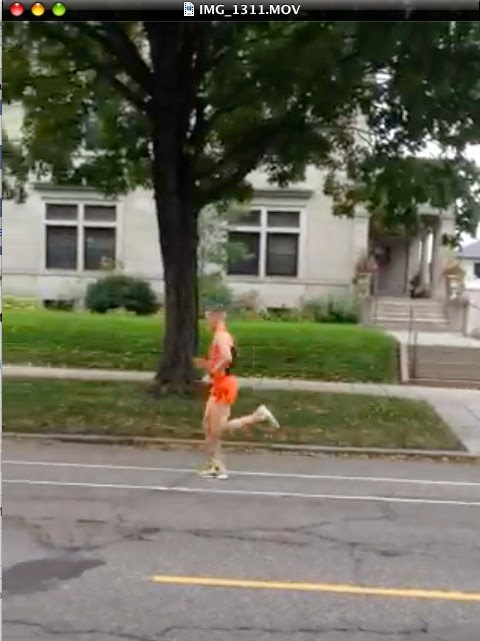Do you do the same workouts all the time? Do you have a favorite running route you just can't break away from? Do you wear the same running shoes every day?
The beauty of the human body is its ability to adapt. In a training context, the body adapts over time to the stimuli (i.e. training) we throw at it. It's the basic "overload principle" of exercise physiology. A muscle must train at a level it isn't accustomed to in order to adapt. Over time, with the same stimuli, that's exactly what it does: adapt.
Once sufficient adaptation occurs, gains begin to slow and then plateau. So, we need to change the stimulus.
Earlier this week I went for about a 45 minute base run. Nothing crazy, just a moderate effort with no watch running by feel. The change up came when I ditched running on the asphalt- or concrete-paved road, to running on the grass alongside it.
I spend about 95% of my time running on paved surfaces. This after about 15 years of playing soccer where I ran almost entirely on grass. Since taking up running, my leg muscles have slowly adapted to the needs of running on pavement. But, when it comes to running on a trail, grass, or some other uneven surface, the muscle demands are different (think stabilizing muscles around your ankle). By running on grass, I reintroduced a different stimulus my legs haven't felt in a while.
So, when you decide to go for your next run, bike ride, swim, or any other workout, ask yourself if you need to throw something new at your body, or if it's just the same thing over and over again with the hope of improve results. And we all know what that means.
The beauty of the human body is its ability to adapt. In a training context, the body adapts over time to the stimuli (i.e. training) we throw at it. It's the basic "overload principle" of exercise physiology. A muscle must train at a level it isn't accustomed to in order to adapt. Over time, with the same stimuli, that's exactly what it does: adapt.
Once sufficient adaptation occurs, gains begin to slow and then plateau. So, we need to change the stimulus.
Earlier this week I went for about a 45 minute base run. Nothing crazy, just a moderate effort with no watch running by feel. The change up came when I ditched running on the asphalt- or concrete-paved road, to running on the grass alongside it.
I spend about 95% of my time running on paved surfaces. This after about 15 years of playing soccer where I ran almost entirely on grass. Since taking up running, my leg muscles have slowly adapted to the needs of running on pavement. But, when it comes to running on a trail, grass, or some other uneven surface, the muscle demands are different (think stabilizing muscles around your ankle). By running on grass, I reintroduced a different stimulus my legs haven't felt in a while.
So, when you decide to go for your next run, bike ride, swim, or any other workout, ask yourself if you need to throw something new at your body, or if it's just the same thing over and over again with the hope of improve results. And we all know what that means.




















